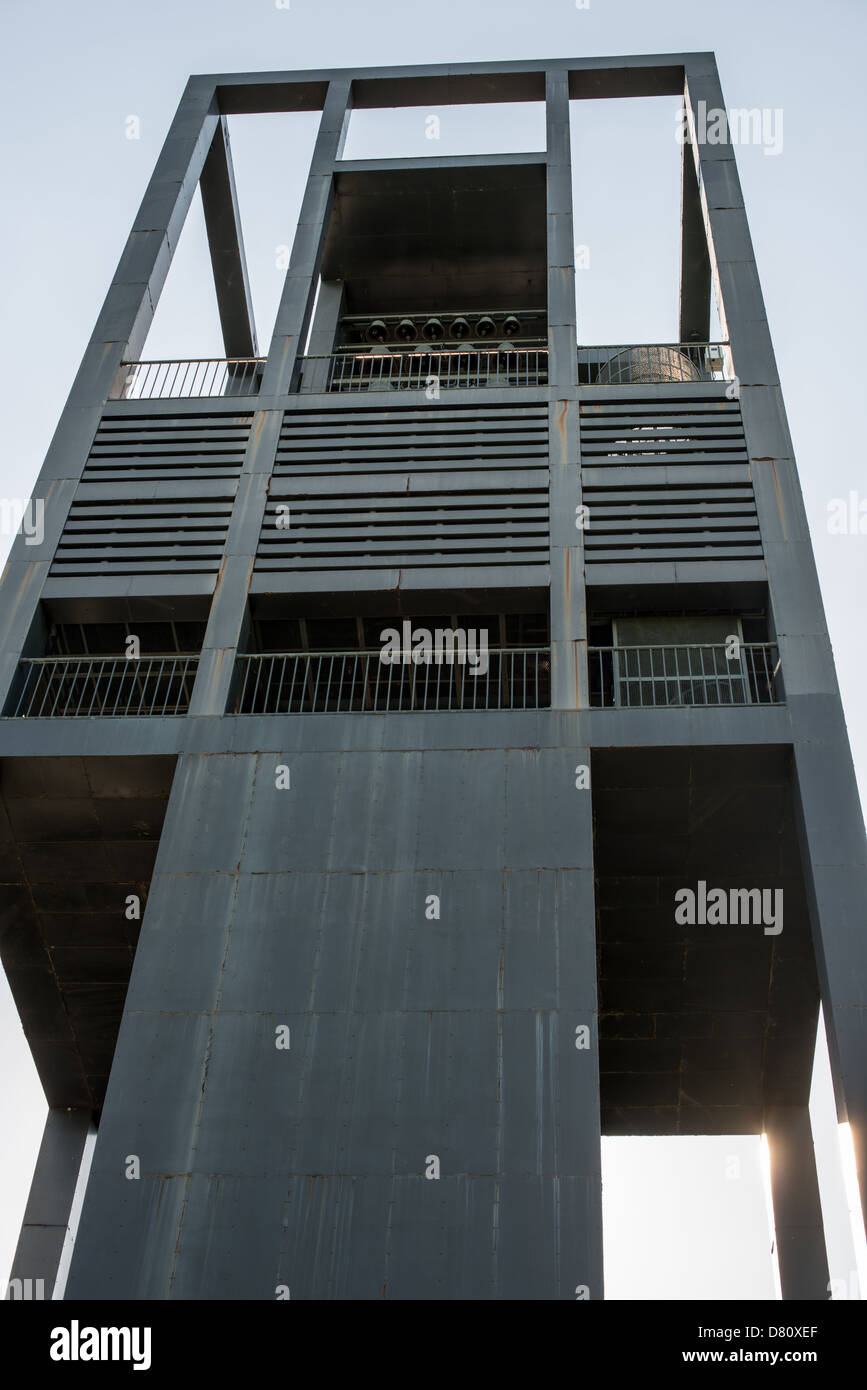ARLINGTON, Virginia, United States — The eastern front of the Netherlands Carillon next to Arlington National Cemetery and the Iwo Jima Memorial. First donated in 1954, the Carillon was moved to its current location in 1960. It was a gift of the Netherlands to the United States in thanks for US aid during World War II. This 127-foot tall open steel structure, gifted by the Netherlands to the United States after World War II, symbolizes Dutch gratitude for American aid and symbolizes ongoing friendship between the two nations.

Image details
Contributor:
David Coleman | Have Camera Will Travel / Alamy Stock PhotoImage ID:
D80XEFFile size:
85.9 MB (2.1 MB Compressed download)Releases:
Model - no | Property - noDo I need a release?Dimensions:
4476 x 6706 px | 37.9 x 56.8 cm | 14.9 x 22.4 inches | 300dpiDate taken:
2 May 2013Location:
Netherlands Carillon, Arlington, Virginia, United StatesMore information:
The Netherlands Carillon, located in Arlington, Virginia, United States, is a 127-foot tall open steel bell tower. It stands in the George Washington Memorial Parkway's Arlington Ridge Park and offers a sweeping view of Washington, D.C. This monument was a post-World War II gift from the people of the Netherlands to the United States, expressing their gratitude for American aid during and after the war. The Carillon's structure, constructed in the modernist style, features 50 bells, with the largest weighing nearly 13, 000 pounds. Each bell bears an emblem signifying a different group within Dutch society, from provinces to universities, symbolizing the collective gratitude of the nation. The design of the structure allows for the sound of the bells to carry across the Potomac River and into Washington D.C., making it a unique acoustic landmark. The Netherlands Carillon is not just a static monument; it is used for regular musical performances. Professional carillonneurs from around the world are invited to play concerts during the summer months. The instrument is also automated to play Westminster Quarters on the hour, as well as American and Dutch patriotic songs at noon and six in the evening respectively. The grounds surrounding the Netherlands Carillon also hold significance. They feature flower beds with thousands of tulips and daffodils, traditional Dutch flowers, blooming in spring. A bronze statue of a Dutch boy and girl, placed in front of the Carillon, symbolizes the post-war generation of the Netherlands. The Netherlands Carillon, therefore, stands as an enduring symbol of international friendship and cooperation, encapsulating shared historical experiences and cultural exchange between the Netherlands and the United States.